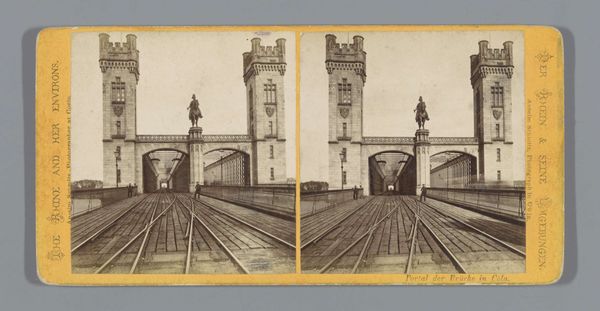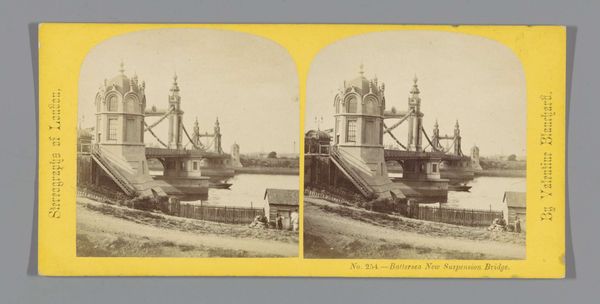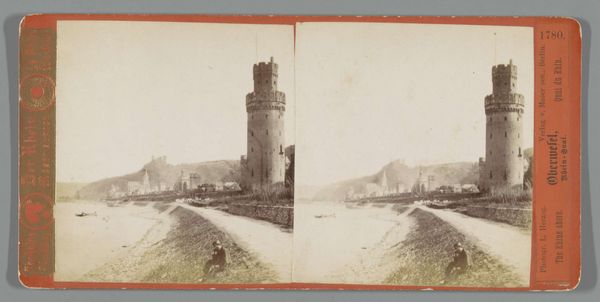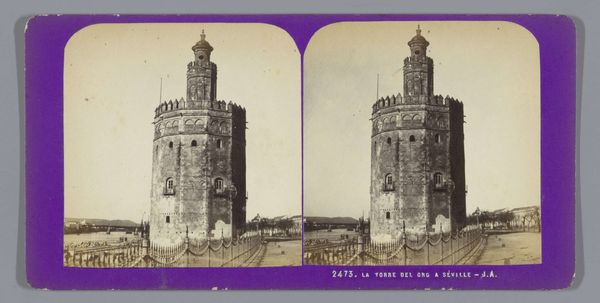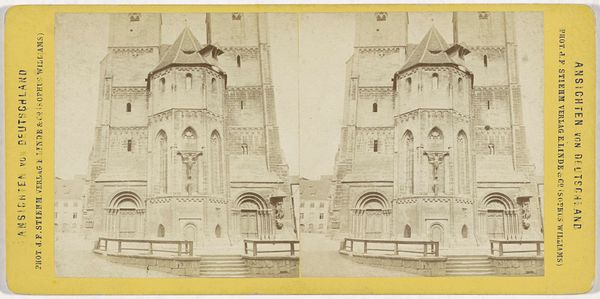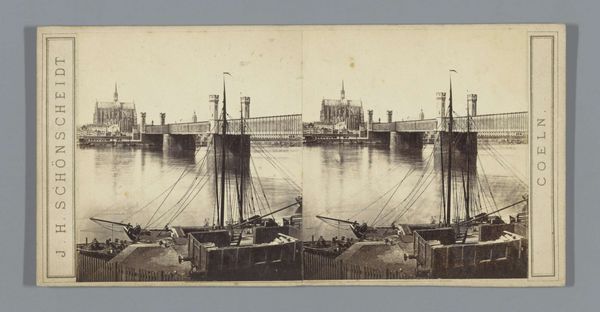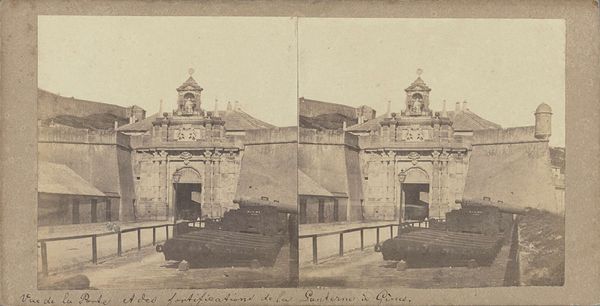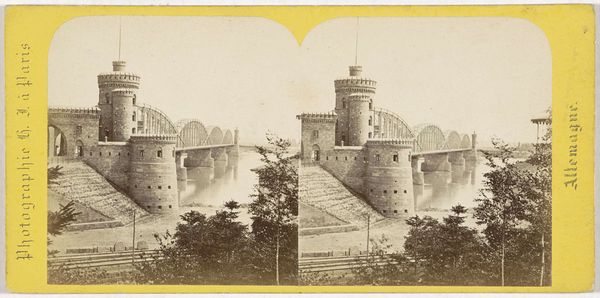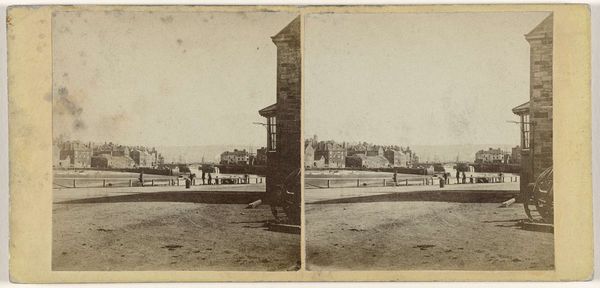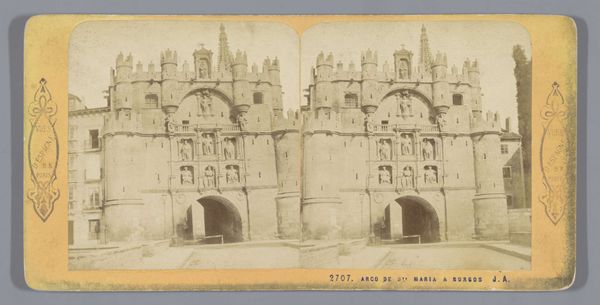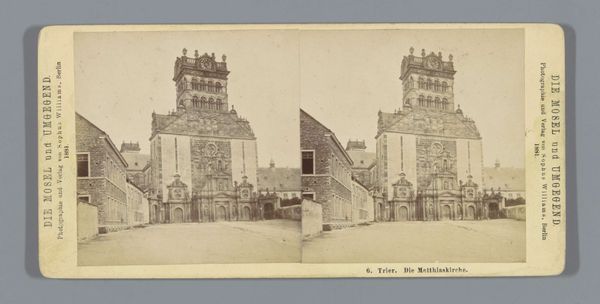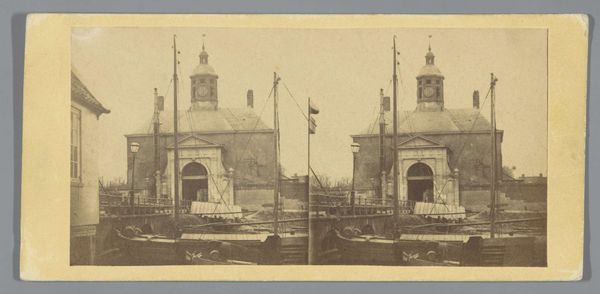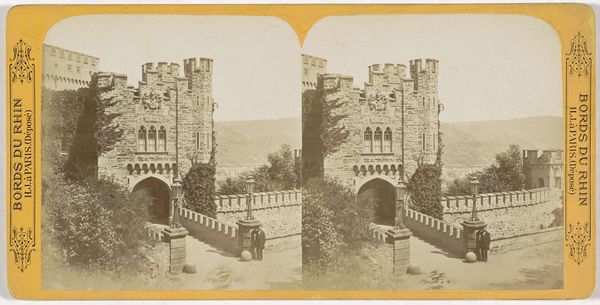
Dimensions: height 85 mm, width 173 mm
Copyright: Rijks Museum: Open Domain
This stereoscopic image of the Torre de Belém in Lisbon was made sometime in the 19th century, using photography, a relatively new technology at the time. Consider for a moment the labor involved in creating this image. The photographer, likely part of a commercial enterprise, would have hauled bulky equipment to the site, carefully arranged the composition, and then developed the glass plate negative. The print itself is a product of chemical processes, requiring knowledge and skill. And of course, the Torre de Belém itself: centuries of quarrying, stonecutting, and masonry, all done by hand. This photograph flattens all of that labor into a single, easily consumed image. It is part of a vast industry of representation that, while offering views of the world, often obscures the true cost of its making. Looking at this image, let's remember that everything we see – from the tower itself to the photograph in our hands – is the product of human work, skill, and ingenuity. This perspective challenges the traditional distinctions between art, craft, and industry, inviting us to see the value in all forms of making.
Comments
No comments
Be the first to comment and join the conversation on the ultimate creative platform.
